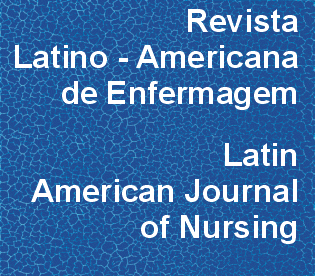Applicability of auriculotherapy in reducing stress and as a coping strategy in nursing professionals
DOI:
https://doi.org/10.1590/S0104-11692012000500021Keywords:
Auriculotherapy, Stress, Coping, NursingAbstract
AIMS: randomized clinical trial aimed at evaluating the auriculotherapy in reducing stress levels in 75 nursing professionals and analyze the coping domains that have changed after treatment. METHODOLOGY: volunteers were divided into 3 groups (Control, Needles and Seeds) and received eight sessions at Shenmen, Kidney and Brainstem points. The Control Group didn't receive any intervention. RESULTS: ANOVA test showed statistical differences in stress levels for Needle/Control Groups in the third and fourth assessments, according to Stress Symptoms List when compared the three groups in four assessments. For the Inventory of Folkman/Lazarus, a significant difference was obtained for Spacing domain between needle/control. In analysis within the same group, differences were found for Confrontation in fourth assessment between Needle/Control Groups and for Social Support in the third one between Seeds/Control Groups. CONCLUSION: The auriculotherapy decreased stress levels, changed Coping domains after treatment, suggesting that both Auriculotherapy with needles and seeds can produce positive impact to improve strategy Coping in the nursing team. However, more studies are needed to conceive the extent of the technique.Downloads
Download data is not yet available.
Downloads
Published
2012-10-01
Issue
Section
Original Articles
License
RLAE’s authorship concept is based on the substantial contribution by each of the individuals listed as authors, mainly in terms of conceiving and planning the research project, collecting or analyzing and interpreting data, writing and critical review. Indication of authors’ names under the article title is limited to six. If more, authors are listed on the online submission form under Acknowledgements. The possibility of including more than six authors will only be examined on multicenter studies, considering the explanations presented by the authors.Including names of authors whose contribution does not fit into the above criteria cannot be justified. Those names can be included in the Acknowledgements section.
Authors are fully responsible for the concepts disseminated in their manuscripts, which do not necessarily reflect the editors’ and editorial board’s opinion.
How to Cite
Applicability of auriculotherapy in reducing stress and as a coping strategy in nursing professionals. (2012). Revista Latino-Americana De Enfermagem, 20(5), 980-987. https://doi.org/10.1590/S0104-11692012000500021



